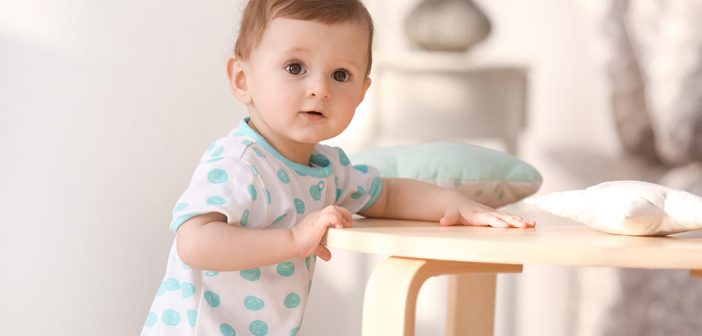Baby Milestone- Speech and language development are most rapid during the first three years of life when the brain is still developing and maturing. The best environment for the development of these abilities is one in which children are constantly exposed to the sounds, sights, and languages of others.
Infants’ and young children’s brains appear to be best able to absorb language during certain critical periods for speech and language development. It will be more difficult to learn if these critical periods go by without exposure to the language.
Baby milestones
Babies learn to communicate when they discover that a cry will elicit responses such as food, comfort, and companionship. The voice of their mother or primary caretaker is one of the first sounds that newborns learn to recognize. Babies sort out the speech sounds that make up their language as they grow older. Most babies can recognize the basic sounds of their native language by the age of six months.
The rate at which children pick up oral and written language skills varies widely. A natural progression or timetable dictates how they learn to speak and write. The following is a milestone checklist for children’s speech and language development from birth to age five. GPs and other health care providers use these milestones to determine if a child is on track or if he or she needs additional assistance. Hearing loss can sometimes cause a delay, but so can a speech or language disorder.
A language disorder and a speech disorder are two different types of disorders.
There may be a problem with the child’s ability to comprehend what others are saying (receptive language) or express their thoughts (expressive language). A language disorder known as specific language impairment (SLI) prevents children from learning basic language skills on time. The third or fourth year may be too late for some children with SLI to begin talking.
A speech disorder may be diagnosed in children who have difficulty producing speech sounds or who pause or stutter while speaking. There are many types of speech disorders, but the most common one is known as apraxia of speech.
It appears that my child’s language development is behind schedule. What should I do?
If you’re concerned about your child’s health, talk to their GP. A speech-language pathologist is a medical specialist with specialized training in diagnosing and treating people who have problems with their speech or language. Your child’s speech and language development will be discussed with you by the speech-language pathologist. In addition, he or she may administer your child a battery of oral assessments. Because of the potential impact on speech and language development that a hearing problem can have, many evaluations include a hearing test. Based on the results of the evaluation, the speech-language pathologist may recommend activities you can do at home to help your child’s development. A developmental psychologist or an audiologist may also be recommended for more in-depth evaluations based on the results of a group or individual therapy.
Baby milestones – From Birth to 3 Months | Baby Milestone
- Astonishment at the loudness of a noise.
- As soon as you say something to her, she either stops crying or smiles.
- Behavior changes in response to sound.
- Smiling when she sees you
Baby milestones – Between 4 and 6 months | Baby Milestone
- Moves the eyes toward the source of the noise.
- Adapts to your voice’s varying pitch and volume
- Takes note of toys that emit noises
- Pays attention to music Babbling sounds more like speech, with a variety of sounds such as p, b, and m.,
- Laughter and chuckles fill the air.
- Expresses elation and vexation through vocalizations.
- Might make gurgling noises.
Baby milestones – 7 months to 1 year
- Peek-a-boo and pat-a-cake might be two of her favorite pastimes.
- In the direction of the sound, she turns and looks.
- Has a good ear and can pick out everyday objects like “juice” or “cup” when spoken to.
- Uses speech or other non-crying sounds to elicit and maintain the parent’s interest.
- He communicates by gesturing (waving, holding arms to be picked up)
- He demonstrates a variety of vocalizations
- It’s common for babies to speak their first words around their first birthday




